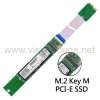- Joined
- Jan 5, 2017
- Messages
- 69
- Reaction score
- 44
- Location
- West Jordan, Utah
- Website
- www.skywardimaging.com
Probably because the drives cost so much from DJI ripping people off they don't want to spend the money to try and crack the encryption key. Nonetheless the drive is whats encrypted not the bird or the camera. So technically if someone was to figure out the plug end and design an adapter you should be able to use any M.2 80mm SSD Drive. The drive itself is a SED (Self Encrypting Drive) meaning the data going onto the drive starts off as unencrypted data. Once it is saved to the SSD the drive hardware encrypts it. Then when it is removed from the drive using the reader (the key is in there by the way so someone with enough knowledge could get it) it is Un-Encrypted for use. There really is only 2 things stopping someone from making an aftermarket solution to this issue. 1. The price of the drives to gain access to the hardware configuration. and 2. The adapter that would be needed to access the drive itself. Not the encryption itself."Standard" meaning off-the-shelf SSDs (whatever the correct form factor is) as opposed to DJI's proprietary version.
If they stick with what they did with the X5R SSDs, they'll be Samsung drives with hardware encryption turned on. Good luck with that.
Like I said, there's probably a reason no one ever produced a third-party alternative to the X5R SSD.









